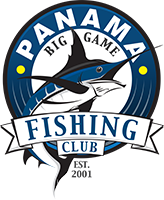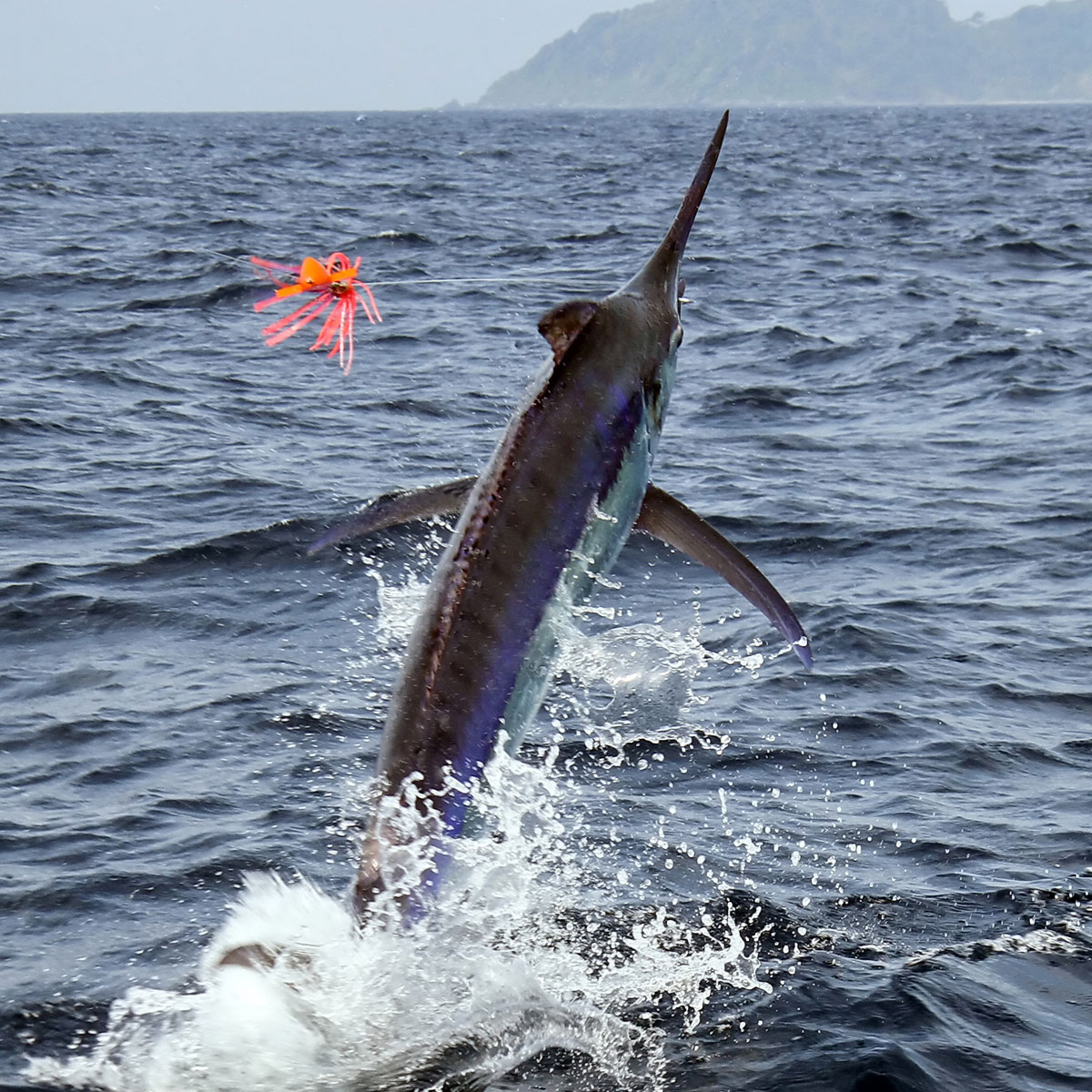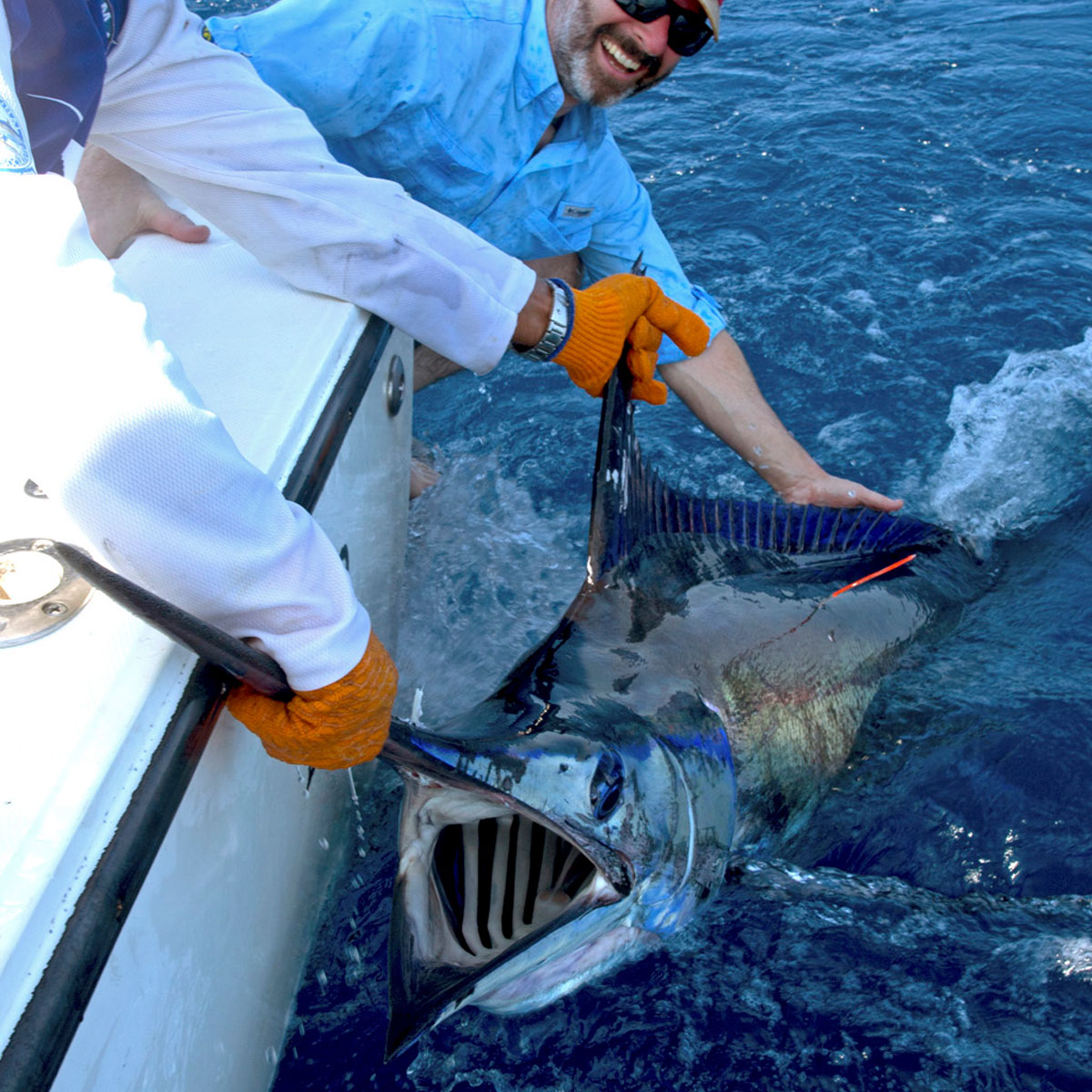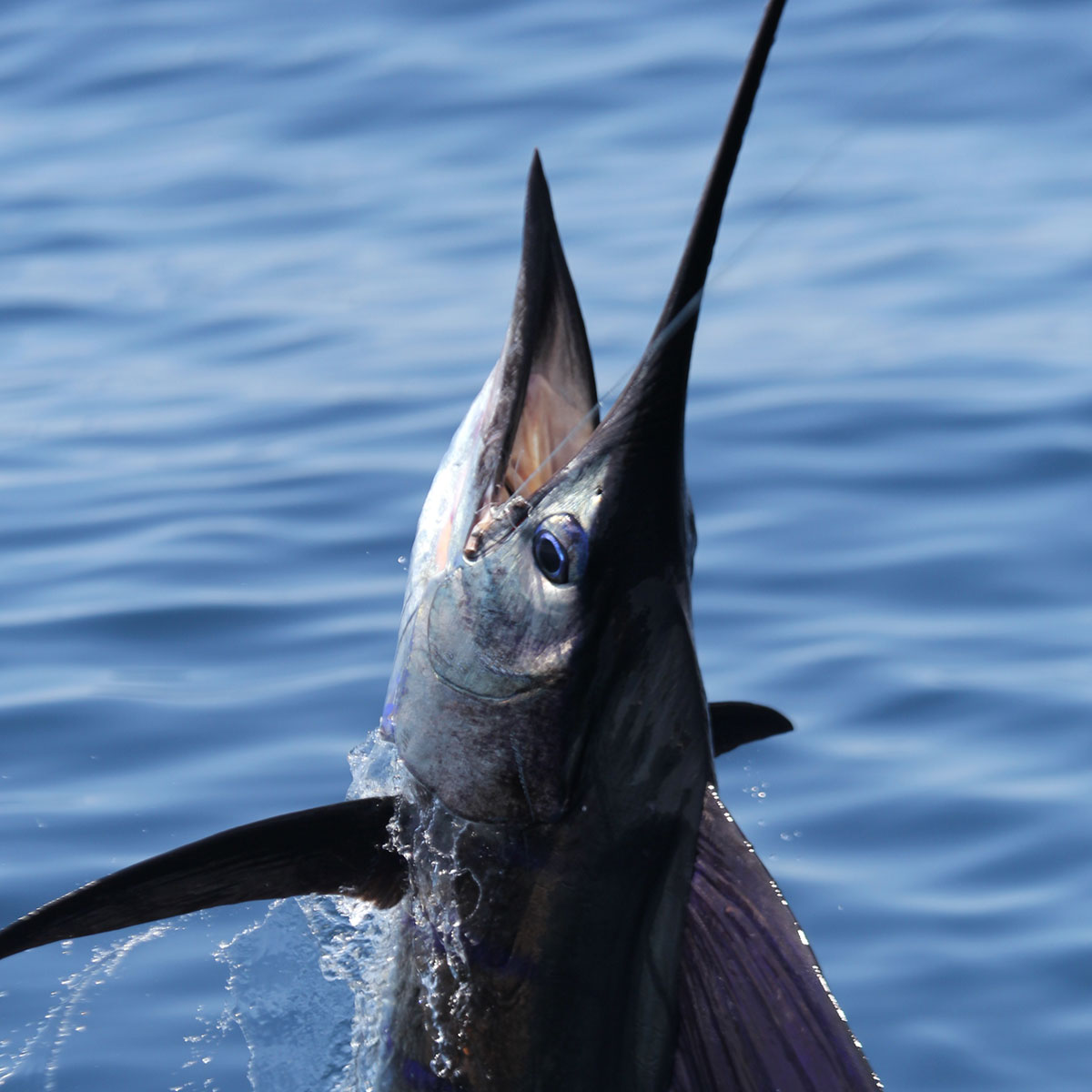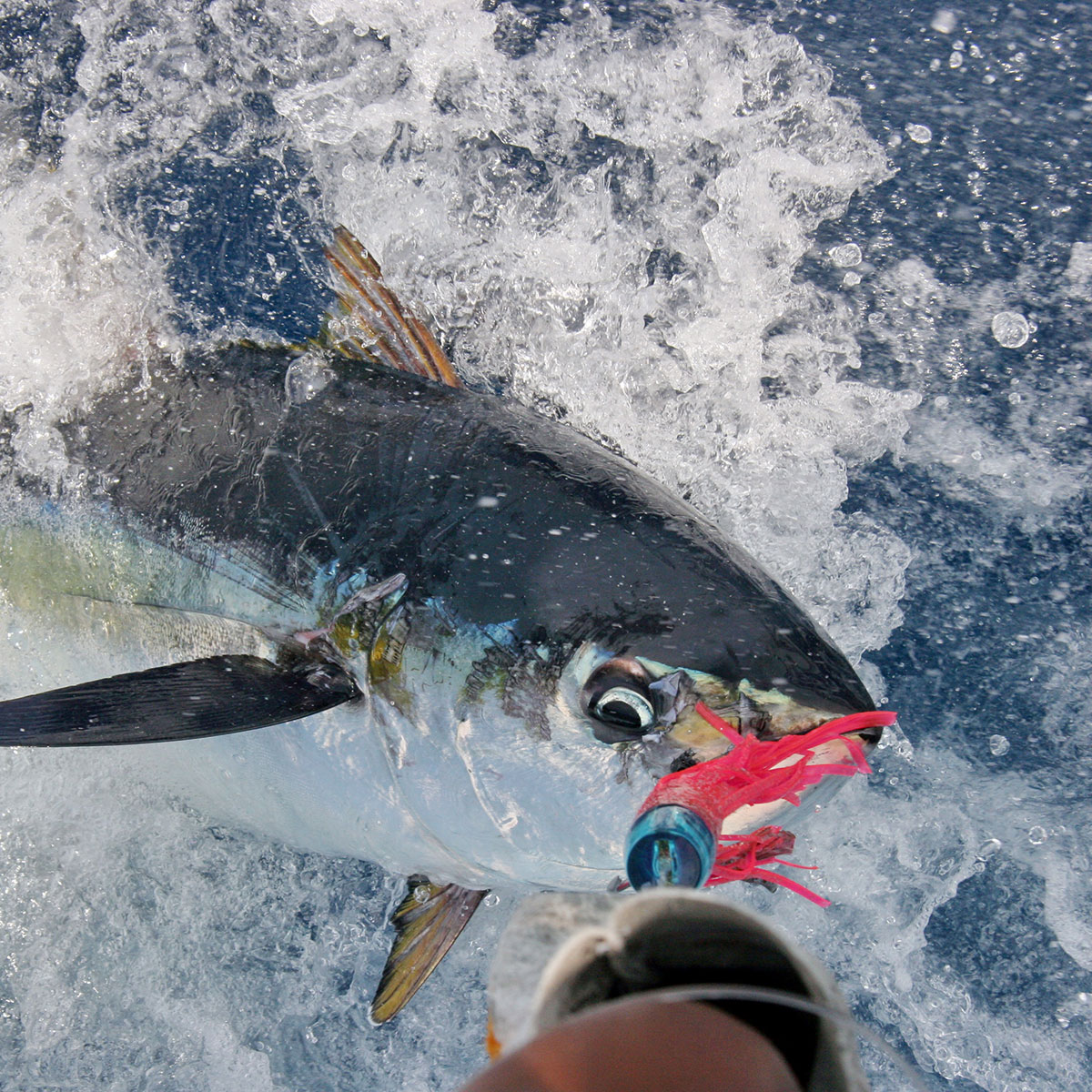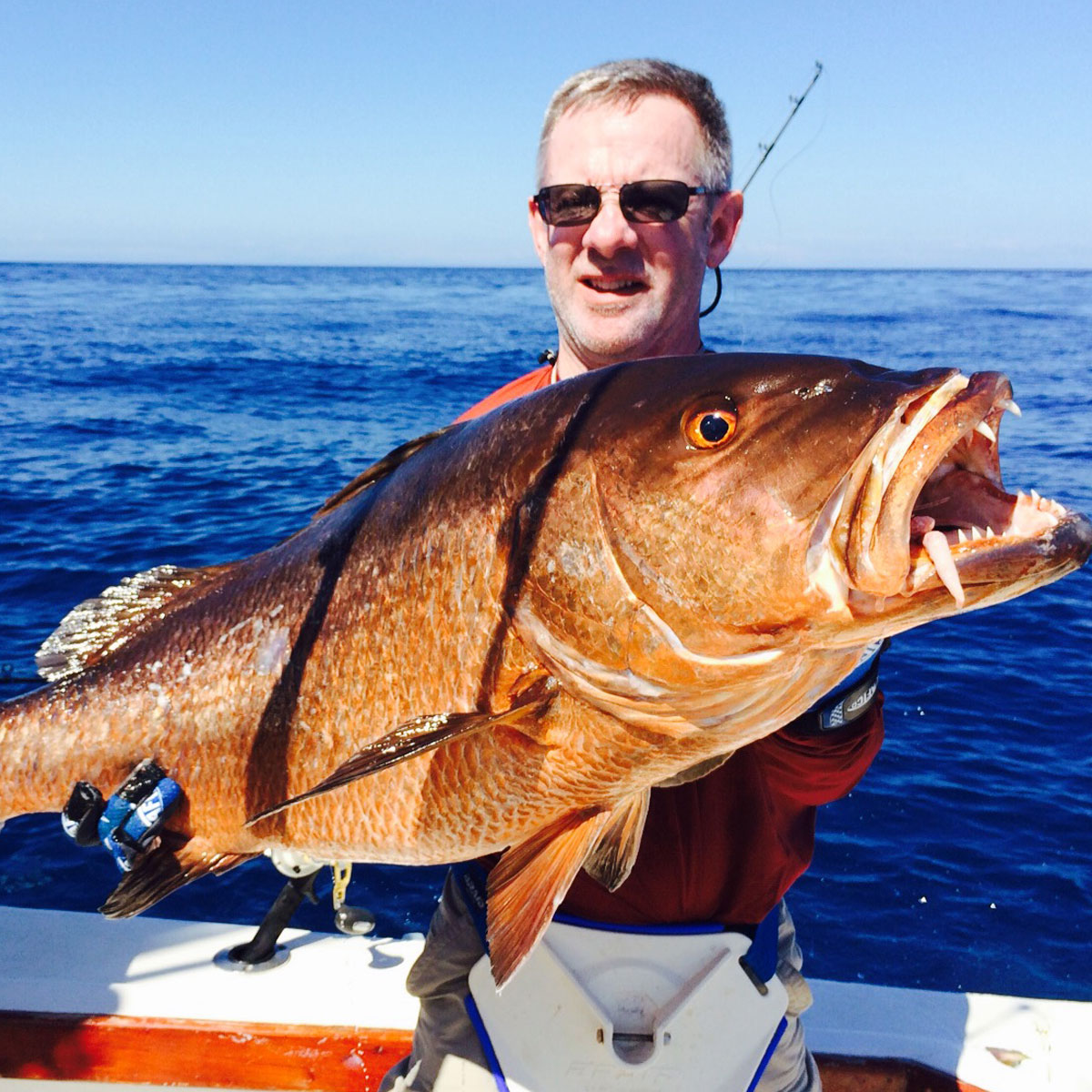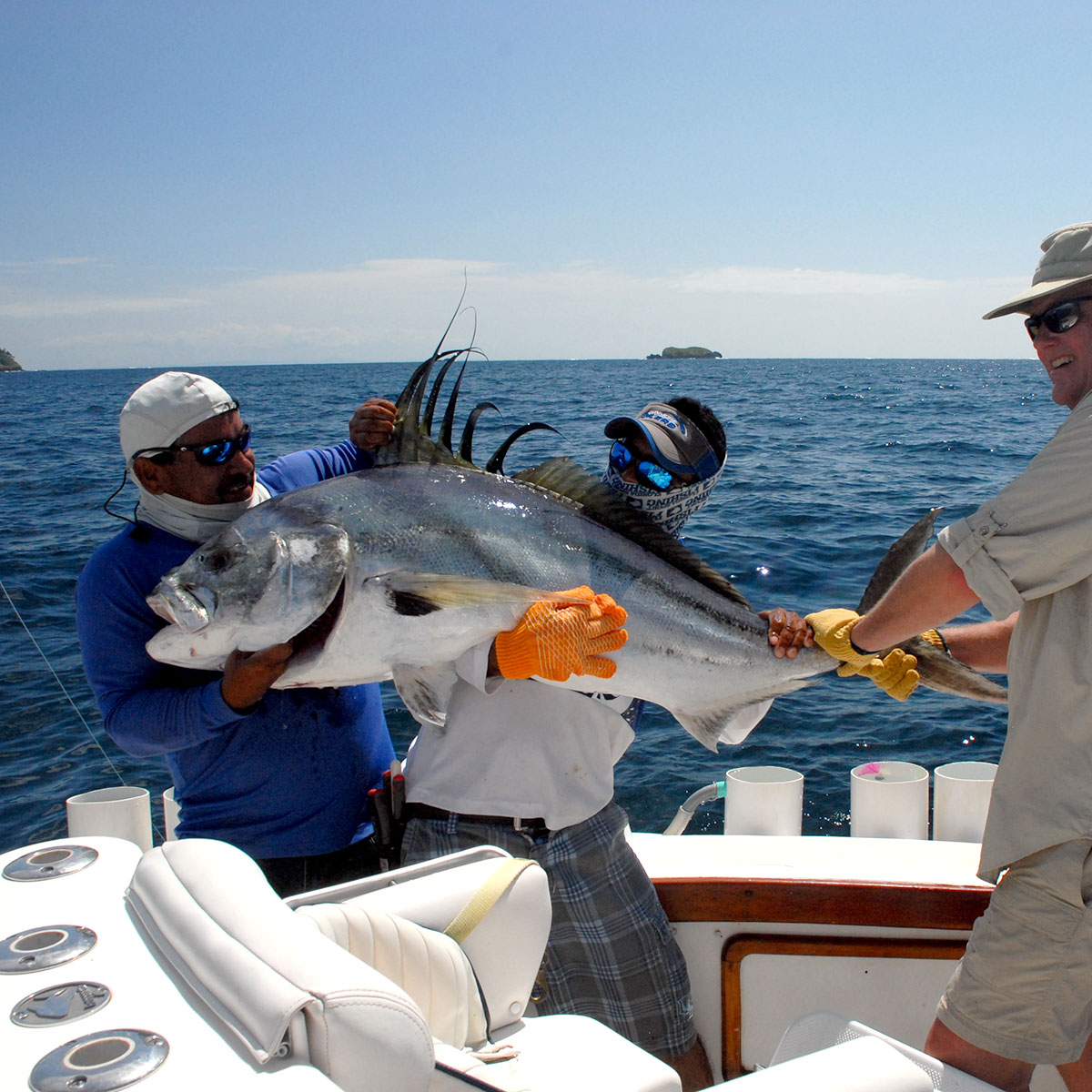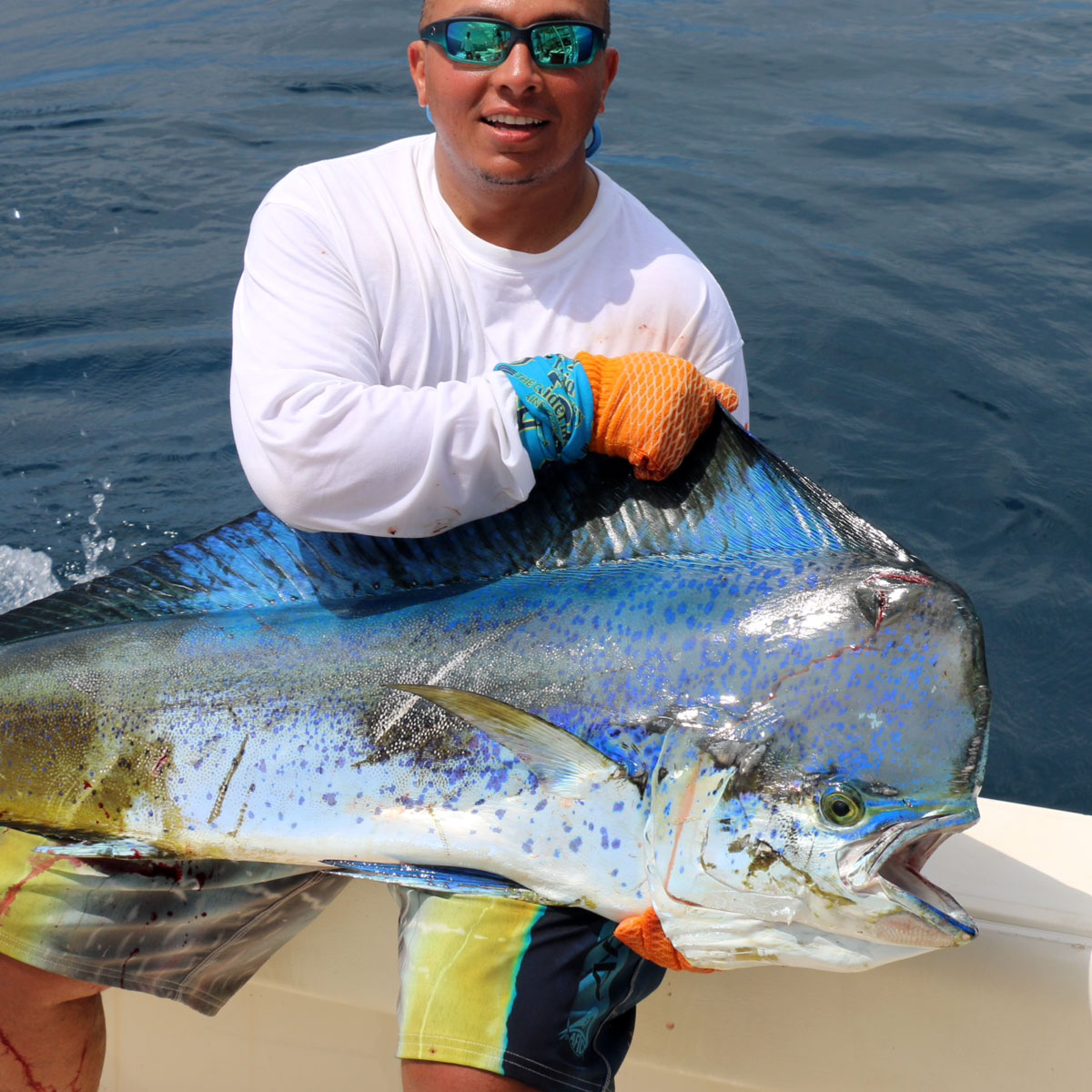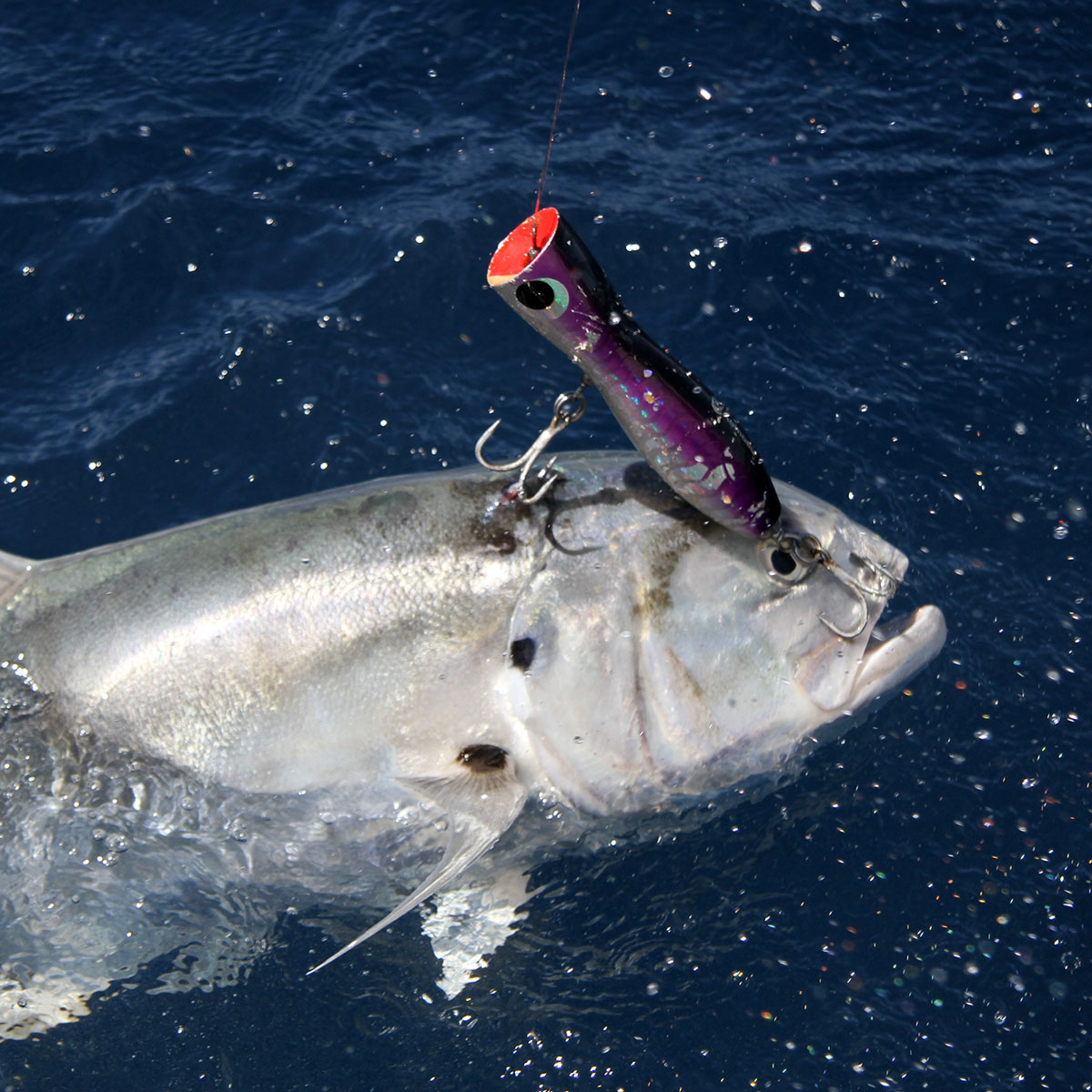(Makaira nigricans)
Hooking and releasing a large blue marlin qualifies for many anglers as sport fishing’s greatest challenge, thrill and accomplishment. Blues are caught in oceans around the world on live and dead baits and large trolled lures. Seeing the bill of a big blue in a trolling spread and then watching an amazing display of power as hundreds of pounds of angry billfish repeatedly go airborne, make for angling’s most unforgettable sights. Blue marlin populations are under siege primarily by (often illegal) commercial longline fishing, which is a threat to the species. The all-tackle record for the Atlantic is 1,402 pounds, 2 ounces, caught off Vitoria, Brazil, in 1979. For the Pacific: 1,376 pounds, taken off Kona, Hawaii, in 1982.
Greatest attribute: Aerial acrobatics (18.7 out of 20)

